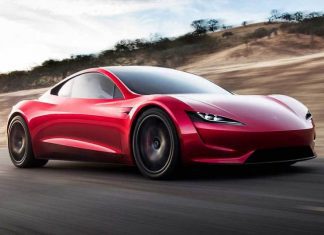Two titans have emerged as the leading contenders in the rapidly developing field of display technology: Mini LED vs OLED. Consumers, businesses, and tech enthusiasts are all interested in these technologies. So let’s check out everything about the Mini LED vs OLED article. But how do they compare to one another? This in-depth Mini LED vs OLED article explores the core of the controversy.
At this point, Mini LED vs OLED are two shining stars in the captivating dance of developing technologies. Both Mini LED vs OLED have risen above the foreground of technological developments to assume the spotlight while enthralling audiences with their brilliance. Which of these display titans really holds the throne as tech enthusiasts, designers, and regular consumers consider their next screen purchase? Join us as we explore Mini LED vs OLED in detail, dissect their features, marvel at their advantages, and comprehend their subtleties. Welcome to the world of screens in the future, where each pixel has a purpose. Now let’s get to know more about this Mini LED vs OLED guide.
1. Introduction to the Technologies
1.1 Mini LED
As the name implies, mini LED backlighting uses tiny light-emitting diodes (LEDs) to illuminate a display. These LEDs are significantly smaller than conventional LEDs, allowing for the compacting of more LEDs into a display.
- Higher Contrast Ratios: More LEDs mean better control over localized dimming zones.
- Improved Brightness Levels: Capable of achieving higher peak brightness than many other displays.
- Energy Efficient: Consumes less power compared to larger LEDs.
1.2 OLED
Organic light-emitting diodes are referred to as OLEDs. OLEDs emit their own light when an electric current is applied, unlike LEDs, which need a backlight. In light of this, a separate backlight is not required.
Key Features:
- True Blacks: Each pixel can be turned on or off individually, allowing for deeper blacks.
- Thinner Displays: Without the need for a backlight, OLED screens can be incredibly thin.
- Wider Viewing Angles: Offers a more consistent viewing experience from various angles.
2. Comparing the Advantages
2.1 Brightness and Contrast
- Mini LED: Offers superior peak brightness, especially compared to older OLED models. The numerous dimming zones provided by the Mini LEDs contribute to higher contrast ratios.
- OLED: While OLEDs might not achieve the same peak brightness levels as Mini LEDs, they do offer true blacks, which can lead to infinite contrast ratios.
2.2 Lifespan and Burn-In
- Mini LED: Generally more durable and has a longer lifespan. There is no risk of burn-in.
- OLED: Over time, OLEDs can suffer from burn-in, where static images remain faintly visible on the screen.
2.3 Color Accuracy and Gamut
- Mini LED: Capable of excellent colour accuracy, though sometimes they may lag behind OLEDs in terms of colour gamut.
- OLED: Known for its wide colour gamut and superior colour accuracy, especially in higher-end models.
3. Potential Drawbacks
3.1 Price
- Mini LED: As a newer technology, it can be pricier than older display types, but it’s generally cheaper than OLED.
- OLED: High manufacturing costs translate to higher prices for consumers.
3.2 Flexibility and Design
- Mini LED: Being a backlight-based technology, they might not be as thin as OLED displays.
- OLED: Extremely flexible, allowing for bendable and even rollable designs.
4. Use Cases: What’s Best for What?
- Gaming: Both Mini LED vs OLED offer fast refresh rates, but gamers might appreciate the higher brightness and lack of burn-in with Mini LED.
- Movie Watching: OLED’s true blacks might give a more immersive cinema-like experience.
- General Use and Browsing: Mini LED could be a more durable and cost-effective choice.
5. Impact on Energy Consumption
Energy efficiency is a common consideration when deciding between Mini LED vs OLED.
5.1 Power Management
- Mini LED: By using numerous localized LEDs, Mini LED screens can manage power more efficiently. When a specific part of the screen needs to be darkened, only the LEDs in that zone are dimmed or turned off, ensuring that unnecessary power isn’t wasted.
- OLED: OLED panels, on the other hand, only draw power for the pixels that are lit. This means in scenes with a lot of black or dark areas, power consumption is minimal.
5.2 Overall Efficiency
- Mini LED: Generally consumes more power than OLEDs, especially when displaying bright images or when high brightness settings are used.
- OLED: Offers better overall energy efficiency, especially when optimized with features such as dynamic power management.
6. Future Developments and Innovations
Like any technology, Mini LED vs OLED are constantly changing in response to consumer demand and advancements in manufacturing.
6.1 Evolution of Mini LED
Mini LEDs could be made even smaller, according to manufacturers and researchers. The potential for even higher contrast ratios, improved brightness, and further power savings is tantalizing with “MicroLED” on the horizon.
6.2 OLED’s Continuous Improvement
Manufacturers are working nonstop to address the shortcomings of OLED. There are ongoing efforts to lower the risk of burn-in, lengthen lifespan, and boost brightness levels. Quantum Dot OLEDs, also known as QD-OLEDs, hold the promise of even greater colour accuracy and efficiency.
7. Integration in Consumer Electronics
These display technologies cannot be discussed without taking their applications into account.
7.1 Smartphones and Tablets*
- Mini LED: While still a newcomer in the mobile device world, tablets, especially those designed for professional use, are adopting Mini LED for its bright and vibrant displays.
- OLED: Dominates the smartphone market due to its thinness and energy efficiency.
7.2 Television Sets*
- Mini LED: Making a significant mark, especially in the premium TV segment where brightness and HDR content are a priority.
- OLED: Remains a favourite for home cinema enthusiasts due to its unparalleled contrast and true blacks.
8. Eco-Friendly Impacts
Understanding how technologies affect the environment is crucial in today’s environmentally conscious world. Let’s investigate how these two Mini LED vs OLED display powerhouses perform in the green space.
8.1 Production and Materials
- Mini LED: The manufacturing process involves producing numerous LEDs, which can lead to increased electronic waste if not managed properly. However, innovations are underway to reduce wastage and utilize more eco-friendly materials.
- OLED: Since OLEDs involve organic materials, they potentially offer a more eco-friendly disposal route, but the catch is in production. The process can involve certain chemicals and solvents that, if not managed correctly, can be harmful.
8.2 Energy Consumption in Daily Use
Although we briefly discussed power usage from the user’s billing perspective earlier, there is also an environmental perspective.
- Mini LED: Higher energy consumption might lead to a larger carbon footprint, especially if the majority of users prefer high-b brightness settings.
- OLED: With efficient energy consumption, OLEDs can potentially reduce the carbon footprint associated with daily electronic usage.
9. Adaptability and Versatility
A technology’s adaptability in a variety of applications outside of consumer electronics depends on how flexible it is.
9.1 Unique Applications
- Mini LED: Given their structure, they’re making their way into sectors like automotive displays, high-definition computer monitors, and even billboard displays.
- OLED: Their flexibility has led to innovations like foldable smartphones, transparent displays, and even wearable tech like smart glasses and flexible wrist displays.
10. The Consumer’s Role
The consumer is crucial in the argument between Mini LED vs OLED.
10.1 Market Trends
Market trends are driven by consumer preferences. Due to its sleek design and vibrant displays, OLED is becoming more and more popular among consumers, and manufacturers have responded by increasing production. Similar to how professionals or gamers may choose Mini LED screens due to their superior brightness and durability, this boosts demand in that market.
10.2 Feedback Loop*
User feedback is extremely important to manufacturers and developers. Consumer complaints about problems like OLED burn-in or a desire for brighter displays guide where R&D funds and attention are placed.
11. Conclusion:
One thing has become abundantly clear as we have explored the subtleties of Mini LED vs OLED technologies: the world of displays is dynamic. Its course is continuously shaped by innovations, consumer preferences, and environmental concerns. Always look forward to brighter, clearer, and more immersive visual experiences by staying tuned, informed, and anticipating them. Displays will become as bright in the future as the technologies that power them.
So this is all about the Mini LED vs OLED article guide. It all comes down to personal preferences, needs, and the particular application when deciding between Mini LED vs OLED. Both technologies have particular advantages and room for development. In the field of display technology, there will undoubtedly be more developments, surprises, and perhaps new competitors in the years to come. Hope you like this Mini LED vs OLED from here now.
It is obvious that both Mini LED vs OLED have advantages and disadvantages. OLED provides unmatched colour accuracy and deeper blacks, but Mini LED is a strong competitor thanks to its impressive brightness levels and robustness. The best option ultimately depends on personal preferences, use cases, and financial limitations. It’s exciting to see what the future holds for display technology as technologies advance! Hope you enjoy checking this type of Mini LED vs OLED content.
Display technology is currently being led by Mini LED vs OLED. There is no one-size-fits-all solution, but consumers can choose the product that best suits their needs by being aware of its features, advantages, and potential drawbacks. The future of display technologies is promising (and incredibly detailed)! Mini LED vs OLED have both made significant advancements in display technology, providing consumers with outstanding viewing experiences. Understanding what best suits your needs is more important than merely arguing over which technology is better.
You are selecting from the best that the market has to offer, whether you prioritize the vivid and extremely bright visuals of a Mini LED or the unparalleled contrast and deep blacks of an OLED. Indeed, the display industry is in a golden age, and as the tech industry continues to push the envelope, we can only expect more innovations. If you enjoy reading the Mini LED vs OLED then please do share Mini LED vs OLED with others as well.
People Also Ask (Frequently Asked Questions)
1. Why are Mini LED vs OLED such a big deal in the tech world?
The pursuit of clearer, brighter, and more energy-efficient displays has always driven the development of screen technology. With unmatched colour accuracy, contrast ratios, and thinness, Mini LED vs OLED both represent the pinnacle of what current technology has to offer. Their rise denotes a leap in visual technology rather than merely a step.
2. Is OLED the same as QLED?
No, they are distinct. OLEDs (Organic light-emitting diodes) do not require a backlight because they produce their own light using organic materials. As opposed to other LED TVs, QLED (Quantum Dot LED) refers to LED TVs that use quantum dots in combination with a backlight to produce brighter colours. This marketing term is primarily used by Samsung.
3. Do Mini LEDs burn out like OLEDs?
Mini LEDs don’t experience burn-in like OLEDs because they are a backlighting technology. Long-term static image display on OLEDs can cause burn-in, which can cause uneven deterioration of the organic materials used in the display. Mini LEDs don’t have this problem because they are not organic.
4. Which is more energy-efficient: Mini LED or OLED?
Despite the high energy efficiency of both technologies, OLED typically outperforms LCD, especially when displaying darker images or content with a lot of black space. This is due to the fact that OLED pixels can completely shut off and use no power, whereas Mini LEDs, despite being extremely efficient, still have a backlight.
5. Are we likely to see new display technologies soon?
The tech sector is constantly changing. Although Mini LED vs OLED are the leading technologies at the moment, manufacturers and researchers are constantly looking into new ones. Exciting developments in the field of display technology are on the horizon thanks to developments like MicroLED and Quantum Dot OLEDs (QD-OLEDs).
6. Which is better for my eyes: Mini LED or OLED?
Both Mini LED vs OLED technologies provide clear, high-resolution displays with little flicker or blue light, which can be good for your eyes. However, depending on brightness levels, amount of screen time, and other variables, individual experiences may differ. To reduce eye strain, always put regular breaks and screen use in well-lit areas first.











